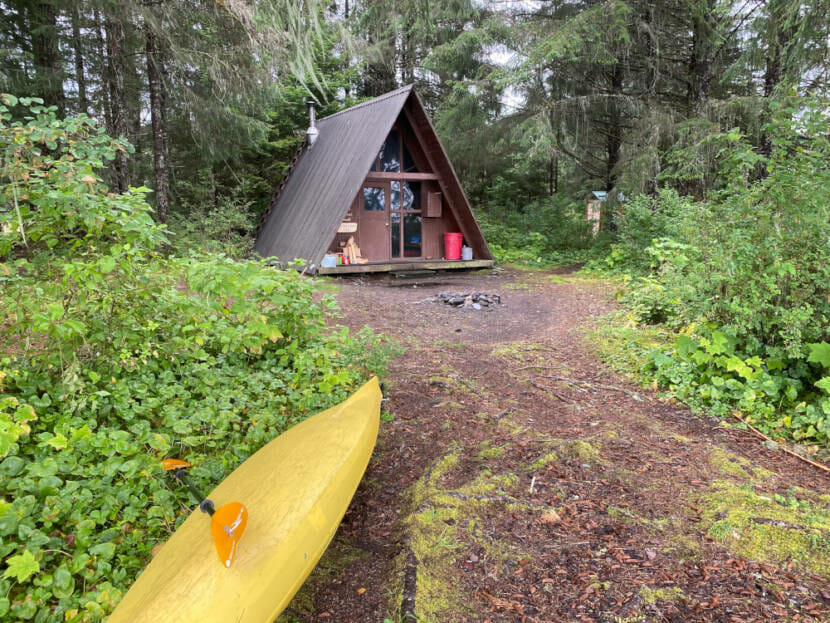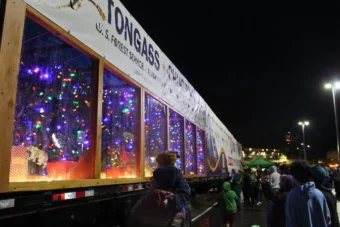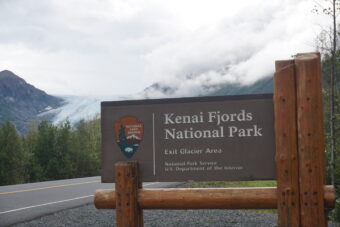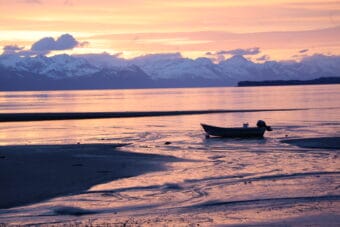
The U.S. Forest Service is seeking feedback on a long list of deferred maintenance work for cabins, trails, roads, bridges and boat ramps on national forest land in Alaska. The agency is working to catch up on a backlog of repairs and replacements and has a relatively new source of federal funding to address some of those needs.
The Great American Outdoors Act passed during the Trump administration authorized $1.9 billion a year for five years to reduce deferred maintenance on public lands across the country. It’s aimed at reducing some of the backlog of work for public agencies.
“As we know here in Southeast Alaska, stuff wears out and it wears out pretty quick because we live in a very wet climate,” said James King, the Forest Service’s director of recreation, land and minerals in the Alaska region.
“So this is a new funding source to tackle those challenges,” he added.
The new funding greatly expands the maintenance work the agency can do each year, and the money is targeted at repairs or replacement of existing facilities. The Forest Service agency typically has about $40 million annually nationwide for capital improvements, with the Alaska region receiving a small portion of that. For the Forest Service nationally, the outdoors act provides an annual $285 million allocation each year for five years for maintenance work.
The Forest Service has already announced a list of improvements for the Tongass and Chugach National forests for 2021 and work proposed under the Biden administration’s budget for 2022. King said the pandemic year put off some of that.
“The districts worked really, really hard to do the best they could to keep things maintained and open because we knew there were a lot of people with everything else shutting down that just wanted to get outside and recreate,” he said.
He added, “However, some of the projects that were scheduled and planned to be worked on, because we didn’t have as big a crew or contractors weren’t as available to do work, there were quite a few projects that were postponed and we’re catching up on those this year trying to keep up with things.”
Pandemic year aside, it’s estimated that the deferred maintenance on roads, trails and bridges alone on forest land in Alaska totals around $120 million, not counting recreational cabins and other facilities. The new funding source will mean $12.3 million in repair work for 2021 and $11.3 million proposed for the Tongass and Chugach in 2022.
“Every district on both forests had at least one project funded in 2021,” said Mim Eiben, the Forest Service’s co-leader on an agency team for allocating the money in the two national forests. “And those projects are, we anticipate many of the projects will be implemented this summer. Now, things come up during construction season, especially post-COVID but that is the plan as for right now,” she said.
On the Tongass, the work for this year includes cabin and shelter repairs, along with road, bridge and culvert replacement. The list for 2022 will be finalized during the Congressional budget process later this year. Eiben said the agency has a public comment period underway this summer on work that could happen in 2023 or later.
“We like to look at the way these projects will be affecting the communities and really are interested in soliciting feedback on that experience as well,” Eiben said. “So we combine all of those metrics together and then try to crank out the projects in that way and submit the ones that are top priorities to the Washington office.”
In the Petersburg area, the funding will mean reconstruction of the Ideal Cove Trail on eastern Mitkof Island is expected to happen this year.
Others proposed for funding in the upcoming year are the replacement of the floating bridge portion of the Ohmer Creek Trail and the decking on the trail to Blind River Rapids. The proposed budget would also fund deck replacement for the outdoor hot tub at Chief Shakes Hot Spring on the Stikine River, reconstruct the Cathedral Falls Trail near Kake and replace a bridge on St. John’s Creek on Zarembo Island.
A lot of the work could be done under contract by private companies. Harvey Hergett, the Forest Service’s director of engineering and information management, encouraged people to submit comments on needs for the next few years.
“We’ve suffered some economic downtown especially in Southeast and Southcentral with cruise ships not coming in and the tourist industry being down a little bit,” Hergett said. “So this is an opportunity to supplement some of those local economies and help stimulate them a little bit, put some folks to work.”
There’s an online interactive map to see repairs that are already funded or are proposed for next year or to submit comments on future needs.
The comment period is open through July 6.


